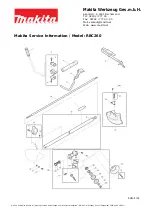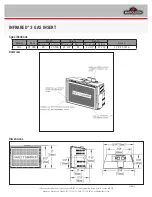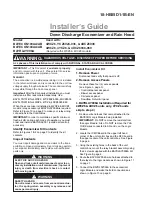
MOUNTING AND ATTACHING FLASHES
The aquatica housing for the Canon 7D offer a choice of connectors in order to take full advantages of available strobes on the market. Standard choice
available are:
20065:
Two Nikonos type manual connectors.
20065-OPT:
Two optical fiber connectors to accept two Sea & Sea elbow type cords or two straight type cord (INON).
20065-HYB
One Nikonos Manual connector and one Optical connector to accept either one Sea & Sea elbow type
cord or two staright standard optical cords.
20065-KM
One Ikelite manual type connector
Optional also are: S6 type connectors and available in the summer 2010, the Nikonos type 6 pins connectors
Depending on which strobe system you are using, you can mount the necessary shoes or brackets or Base Ball onto the threaded holes on the top of
the hand grips. Use of the Aquatica Technical Lighting Control Strobe Arm System is recommended.
There are also three 1/4”-20 threaded holes on the bottom of the housing that can be used for various mounting applications. For example, A mounting
tray can be fitted on the bottom of the housing. A 1/4”-20 threaded hole on top of the tront half of the housing will accept an Aquatica bracket or Base Ball
that can hold a small dive light or a strobe arm.
Internal switch board circuit:
Your Aquatica 7D Pro Digital housing might be supplied with two Nikonos type connectors which are in turn
connected to a switch board circuit. Optional Ikelite bulkheads connectors are also available.
When preparing the sync cord be sure to lubricate the O-ring on the sync cord’s connector with a light coat of
Aquatica O-ring lubricant, Also advisable is to put a light coat of O-ring lubricant on the threads of this connector.
Your Canon Digital camera design does not allow flashes to be connected directly to the camera and be used in eTTL unless they are original Canon
flashes in third party housing with the required connector and cords.
On your housing you will find two bulkhead connectors, the main and secondary connectors are wired through a switch board that will allow you to
eventualy evolves as underwater strobes technology does in the future. By default you housing is delivered with the switch board set to full manual, if the
eTTL exposure is desired then it can be made in either of two methods:
1) By using a single flash from Canon or other brand (that is eTTL compatible with your camera) in a underwater housing connected with a proper 6
pins TTL cord to a compatible 6 pins connectors on your Aquatica housing.
2) By using an external eTTL converter connected to a 6 pins connector on your Aquatica housing to which one or two underwater strobes with compat
-
ible TTL cords are then connected to this converter, (check strobe and converter
manufacturer for compatibility).
Set up instruction for eTTL operation:
Using the tip of a pen push the switches 1, 2, 3 & 4 to the ON (up) position, this will activate the connections on
your main 6 pins bulkhead connector allowing eTTL communication between the camera and the housed flash or eTTL converter.
Set up instruction for manual operation:
All switches must be in the OFF (lower) position, in this case all eTTL connections are disabled and only the
ground and sync are left active, this will allow two underwater strobes or housed flashes to be connected directly via the main and secondary bulkhead.
FOR OPTICAL CONNECTORS
The housing with optical connectors are supplied with adapter for typical straight cord used by INON and
various strobe manufacturers and angled Sea & Sea type cords, select the desired connection and install
on the optical port base, tighten the set screw into place with the supplied hexagonal wrench.
In order to to use Opticall triggering, the built-in flash of the camera need to be in the up position, this is done
at time of installation. Select the proper sync mode (rear, slow, etc.).
Note:
it is advisable to turn the camera off when travelling to your dive site in order to avoid useless drain
of the camera and strobes the batteries. Field testing as shown that mixing different brands of strobes give
unreliable result and should be avoided. Also noteworthy is the fact that many strobe offer Optical triggering,
but TTL is only available with thoses that offer S-TTL type of signal, please check carefully prior to purchasing
your strobes to make sure that they are indeed able to provide TTL exposure.
Remember not to install the hot shoe if shooting optically triggered strobes (HYB version) as this hot shoe
disengages the internal built-in flash of the camera and prevent this later from triggering. Always do a few test
exposures once you finished setting up the strobes
page 9
Sea & Sea Type angle
INON Type Straight cord

































